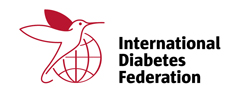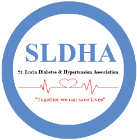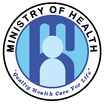Your doctor will diagnose high blood cholesterol by checking the cholesterol levels in your blood. A blood test called a lipoprotein panel can measure your cholesterol levels. Before the test, you’ll need to fast (not eat or drink anything but water) for 9 to 12 hours.
The lipoprotein panel will give your doctor information about your:
- Total cholesterol. Total cholesterol is a measure of the total amount of cholesterol in your blood, including low-density lipoprotein (LDL) cholesterol and high-density lipoprotein (HDL) cholesterol.
- LDL cholesterol. LDL, or “bad,” cholesterol is the main source of cholesterol buildup and blockages in the arteries.
- HDL cholesterol. HDL, or “good,” cholesterol helps remove cholesterol from your arteries.
- Triglycerides (tri-GLIH-seh-rides). Triglycerides are a type of fat found in your blood. Some studies suggest that a high level of triglycerides in the blood may raise the risk of coronary heart disease, especially in women.
If it’s not possible to have a lipoprotein panel, knowing your total cholesterol and HDL cholesterol can give you a general idea about your cholesterol levels.
Testing for total and HDL cholesterol does not require fasting. If your total cholesterol is 200 mg/dL or more, or if your HDL cholesterol is less than 40 mg/dL, your doctor will likely recommend that you have a lipoprotein panel. (Cholesterol is measured as milligrams (mg) of cholesterol per deciliter (dL) of blood.)
The tables below show total, LDL, and HDL cholesterol levels and their corresponding categories. See how your cholesterol numbers compare to the numbers in the tables below.
|
Total Cholesterol Level |
Total Cholesterol Category |
|
Less than 200 mg/dL |
Desirable |
|
200–239 mg/dL |
Borderline high |
|
240 mg/dL and higher |
High |
|
LDL Cholesterol Level |
LDL Cholesterol Category |
|
Less than 100 mg/dL |
Optimal |
|
100–129 mg/dL |
Near optimal/above optimal |
|
130–159 mg/dL |
Borderline high |
|
160–189 mg/dL |
High |
|
190 mg/dL and higher |
Very high |
|
HDL Cholesterol Level |
HDL Cholesterol Category |
|
Less than 40 mg/dL |
A major risk factor for heart disease |




